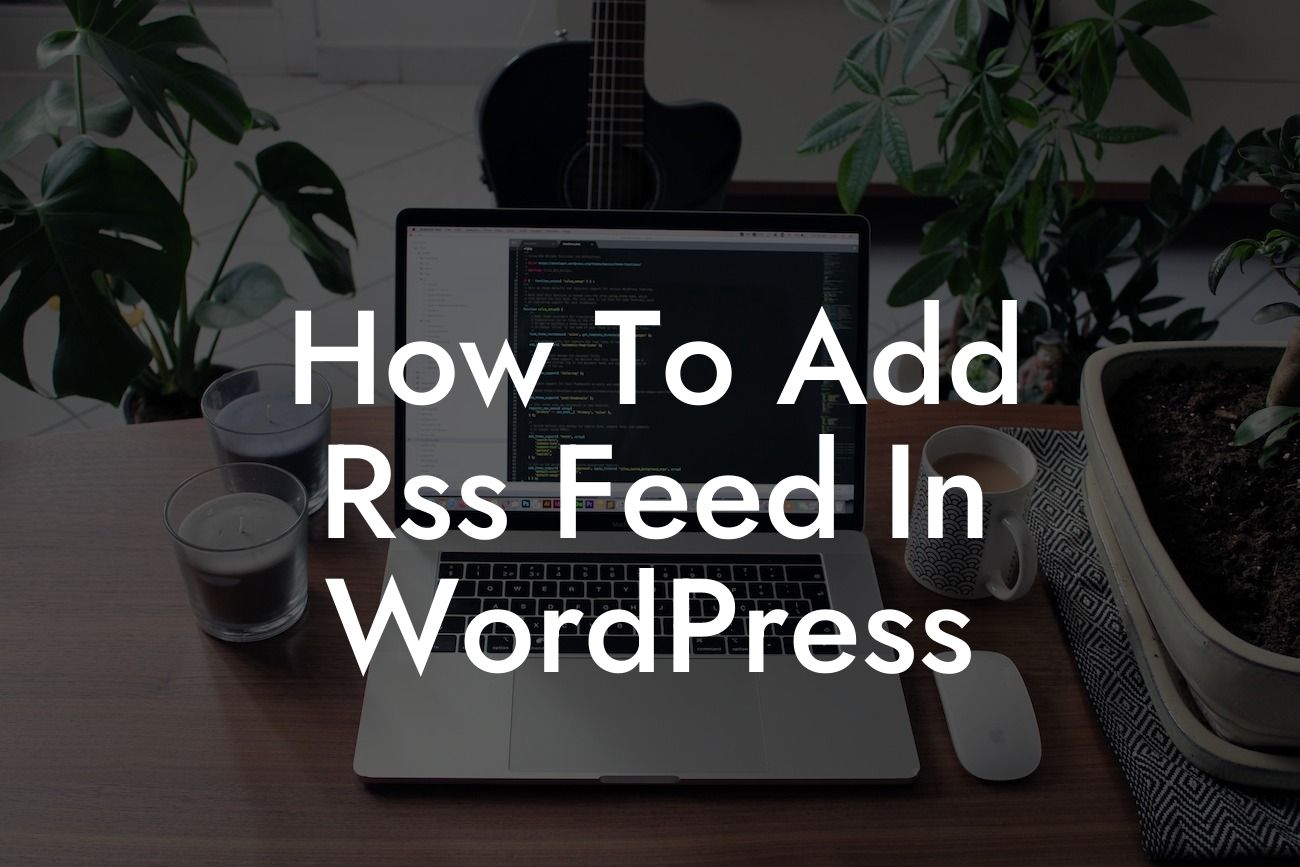Adding an RSS feed to your WordPress website can significantly enhance your online presence and keep your audience informed about your latest posts and news. In this comprehensive guide, we will walk you through the process of adding an RSS feed to your WordPress site, ensuring that your valuable content reaches a wider audience effortlessly. Whether you are a small business owner or an entrepreneur, integrating an RSS feed is a simple yet powerful step towards supercharging your success. So, let's dive in and discover how you can easily set up and manage an RSS feed on your WordPress site.
Adding an RSS feed in WordPress is a straightforward procedure that requires a few simple steps. Let's break it down into easy-to-follow sections:
1. Install an RSS Feed Plugin:
To begin, you need to install a reliable RSS feed plugin. There are several plugins available in the WordPress repository, but we recommend the "RSS Feed Widget" plugin. It is user-friendly and offers a range of customization options to match your website's design seamlessly.
2. Activate the Plugin:
Looking For a Custom QuickBook Integration?
After installing the plugin, activate it from the Plugins section in your WordPress dashboard. Once activated, you can access the plugin's settings and customize it according to your preferences.
3. Configure the Settings:
In the plugin settings, you can define the number of posts you want to display in your RSS feed, choose the layout and style, and customize other display options. This allows you to tailor the RSS feed to match your website's branding and design.
4. Place the RSS Feed Widget:
After configuring the settings, you can place the RSS feed widget in any desired area of your website. The most common placement is usually in the sidebar or footer, ensuring that it remains easily accessible for your audience.
How To Add Rss Feed In Wordpress Example:
Let's consider a scenario where you run a food blog. By adding an RSS feed to your WordPress site, your subscribers can receive automatic updates whenever you publish a new recipe or a mouthwatering article. This convenience not only enhances user experience but also encourages visitors to stay engaged with your content, increasing the chances of them coming back for more.
Congratulations! You have successfully learned how to add an RSS feed in WordPress. By implementing this feature, you have empowered your website with a tool that enhances user experience and keeps your audience up-to-date with your latest posts and news.
Don't forget to encourage your readers to explore other helpful guides on DamnWoo and try one of our awesome plugins to further amplify their online presence. Remember, with DamnWoo, you can leave cookie-cutter solutions behind and embrace the extraordinary!
Share this article with others who might find it helpful, and stay tuned for more useful content coming your way.













